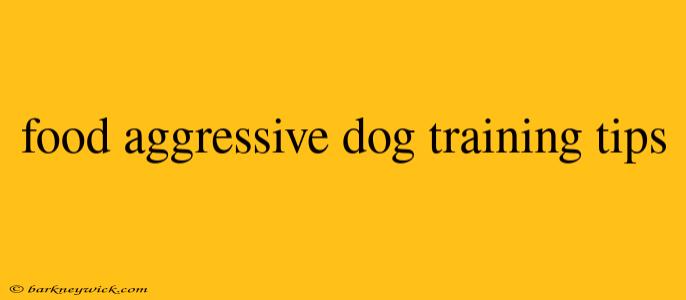Food aggression is a common problem in dogs, but it's important to address it early on to prevent it from escalating. Here are some tips for training your food aggressive dog:
Understanding Food Aggression
Food aggression is a behavior in which a dog becomes protective of their food and may growl, snap, or bite when someone tries to take it away. It can be caused by a variety of factors, including:
- Resource guarding: The dog perceives food as a valuable resource and feels the need to protect it.
- Fear: The dog is fearful of losing their food and may react aggressively to protect it.
- Pain: The dog may be in pain when eating and may react defensively.
- Past experiences: The dog may have had negative experiences with food in the past, such as being deprived of food or being punished for eating.
Training Tips
1. Consult a Professional
If you suspect your dog is food aggressive, it's important to consult with a professional dog trainer or behaviorist. They can help you assess the situation and develop a training plan that is safe and effective for you and your dog.
2. Start with Basic Obedience
A solid foundation in basic obedience commands, such as "sit," "stay," and "come," can be very helpful in managing food aggression. These commands give you control over your dog and can help them to stay calm and focused during training.
3. Desensitization and Counterconditioning
Desensitization and counterconditioning are two techniques that can be used to help your dog become less fearful and reactive around food.
- Desensitization: This involves gradually exposing your dog to the trigger (food) while maintaining a safe distance.
- Counterconditioning: This involves pairing the trigger (food) with a positive experience, such as a treat or praise.
4. Hand-Feeding
Hand-feeding can be a helpful way to build trust and confidence in your dog. It involves feeding your dog by hand, which allows you to control the pace of eating and helps them to associate you with positive experiences.
5. Avoid Punishment
Punishing your dog for food aggression will only make the problem worse. Instead, focus on positive reinforcement techniques, such as rewarding your dog for calm behavior.
6. Feeding Management
Managing your dog's feeding routine can help to reduce food aggression. This includes feeding them in a quiet, safe location, where they feel comfortable and secure.
7. Supervise Interactions
Always supervise your dog when they are eating. Don't allow children to approach them while they are eating, and make sure that all interactions with your dog around food are calm and respectful.
Additional Tips
- Keep your dog well-fed: A hungry dog is more likely to be food aggressive.
- Feed your dog in a quiet place: Avoid feeding your dog in a busy area, such as the kitchen, where they may feel overwhelmed.
- Never take food away from your dog without a warning: This can trigger a defensive reaction.
- Be patient: Training a food aggressive dog takes time and patience. Don't get discouraged if you don't see results immediately.
It's important to remember that food aggression is a serious problem, and it's best to seek professional help if you're struggling to manage it. With patience and consistency, you can help your dog to overcome their food aggression and enjoy a happy, healthy life.
